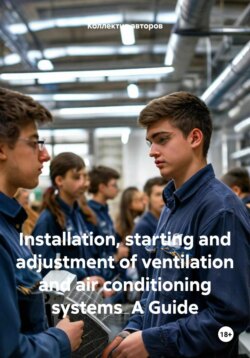Читать книгу Installation, starting and adjustment of ventilation and air conditioning systems A Guide - - Страница 7
Chapter III. Equipment of air ventilation systems
3.1. Air intake and air discharge devices
ОглавлениеThese include air intake and air discharge devices in mechanical ventilation systems, which are made in the form of holes in the fences of buildings, attached or freestanding shafts. When air is taken from above, the air intake devices are placed in the attic or upper floor of the building, and the channels are removed above the roof in the form of shafts.
For aeration, air intake and ejection devices are made in the form of rotating transoms, opening lanterns, windows or other overlapping apertures in the fences of buildings.
The location and design of the air intake devices are selected taking into account the cleanliness of the intake air and the satisfaction of architectural requirements. Thus, air intake devices should not be located near sources of air pollution (emissions of polluted air or gases, chimneys, kitchens, unpaved roads, etc.).
Air intake apertures should be located at a height of at least 2 m from the ground surface and closed with louvered grilles (in the green zone – at a height of at least 1 m).
To protect the premises from outside cold air during standby of the ventilation through ventilation ducts, air intake and air discharge devices are equipped with multi-leaf insulated valves with manual or mechanical drive. In the latter case, the valve is blocked along with the fan closing the apertures. At low temperature of the outside air, the valves are supplied with an electric heating system in order to protect their flaps from freezing. Electric heating is turned on for 10–15 minutes before starting the fan (Fig.2).
Fig.2. Electric air valve
The outer walls of exhaust ducts and shafts are insulated to avoid condensation and ice of water vapor from the extracted moist air. The air velocity in the supply channels and shafts is supported between 2 and 5 m/s, in the channels and shafts of exhaust devices: 4–8 m/s, but not less than 0.5 m/s, including for natural ventilation.
